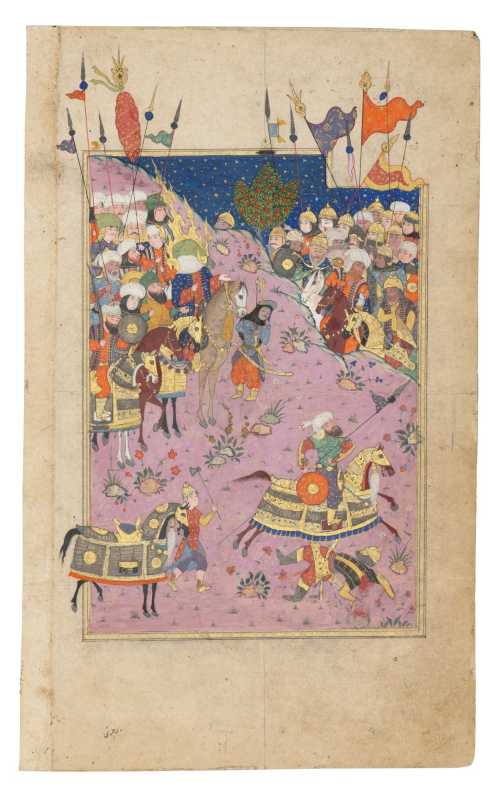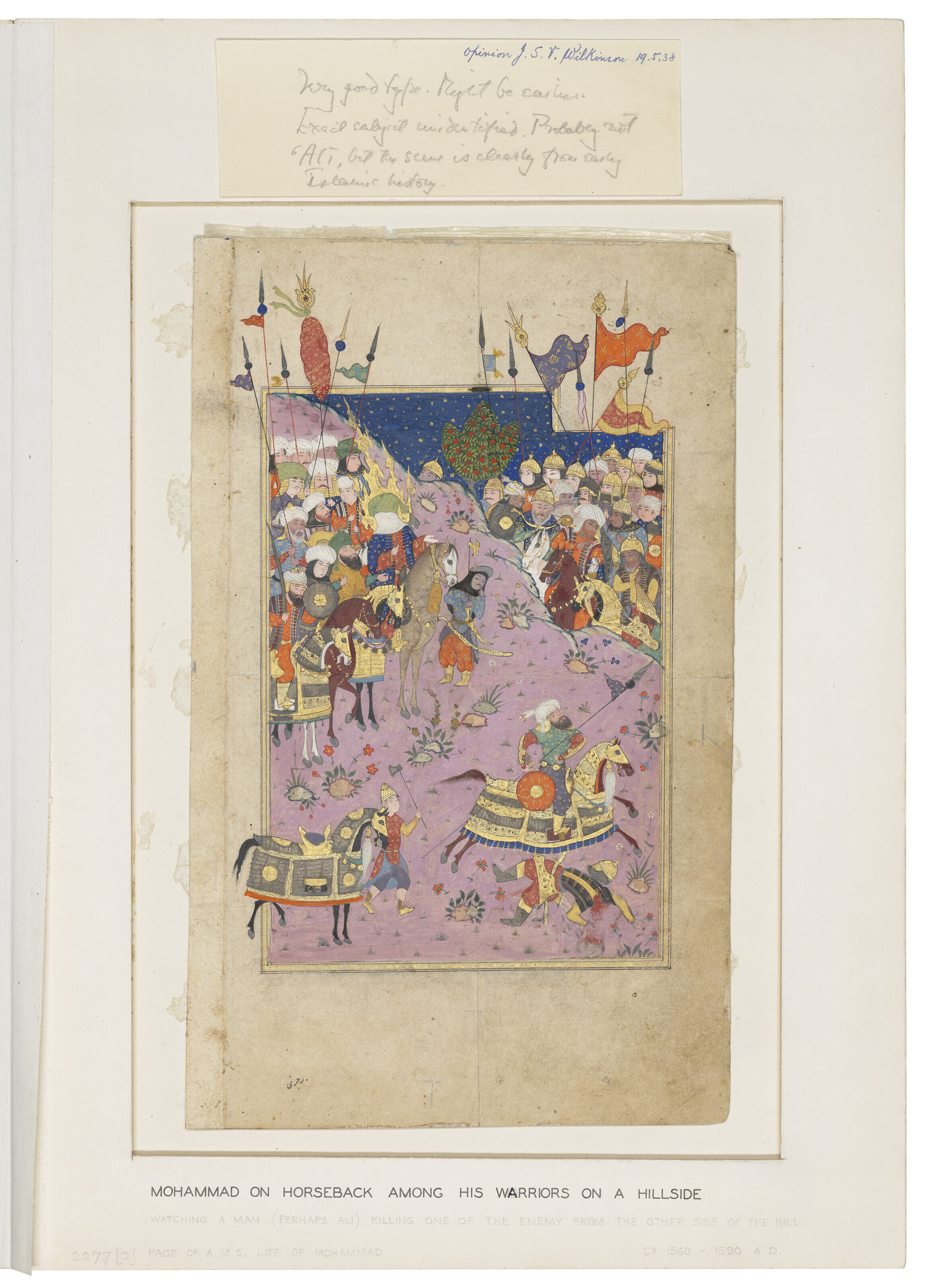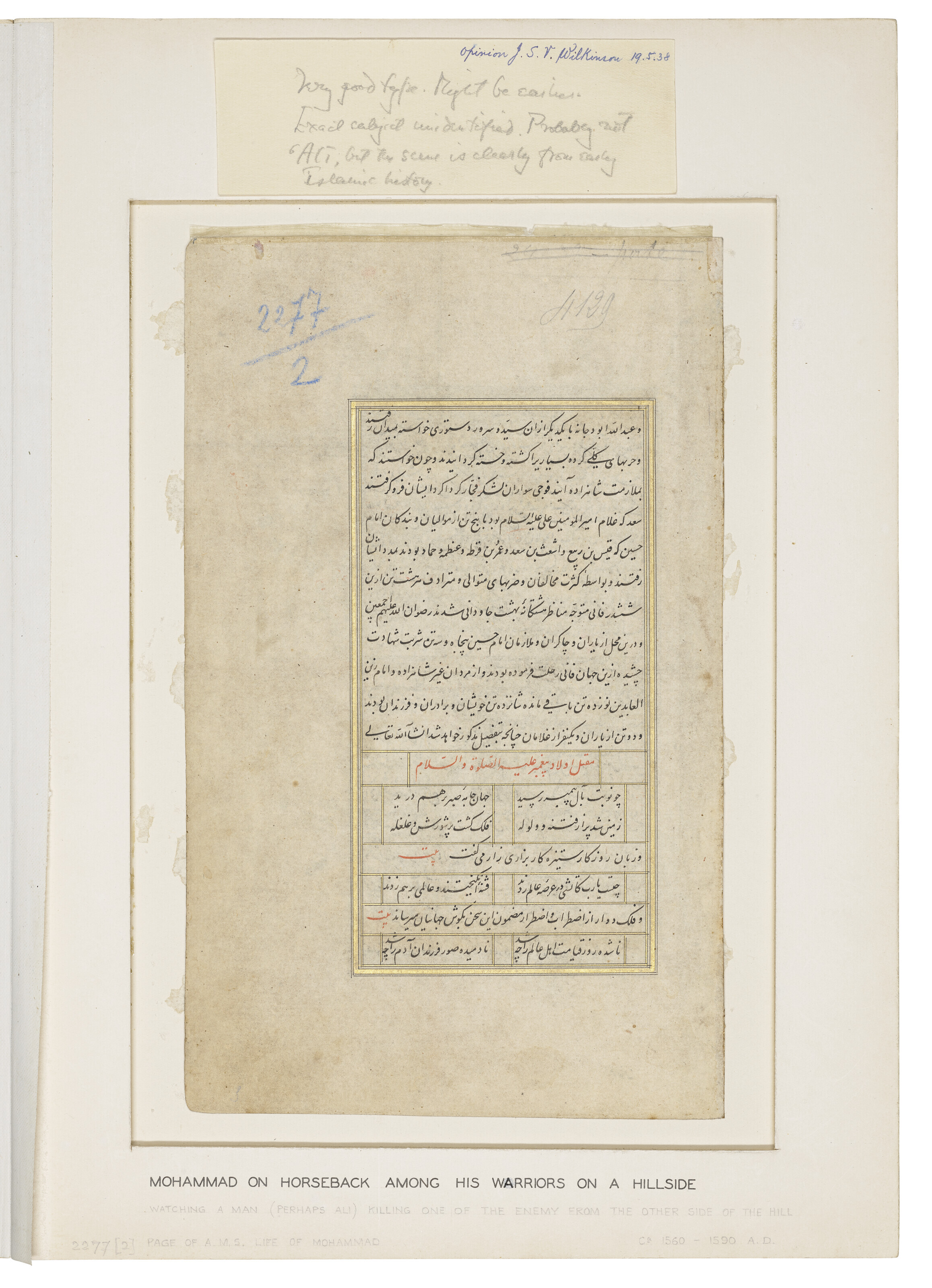- A SCENE FROM THE BATTLE OF KARBALA 1580 - 1590
- Handicrafts and classics, miniature
- 15.4 * 25.4 cm
- OTTOMAN BAGHDAD, CIRCA 1580-90
Opaque pigments heightened with gold on paper, the reverse with 18ll. black nasta'liq with headings and key words in red, between gold and polychrome rules, pencil numbers on the reverse
Painting 6 1⁄2 x 4 1⁄2in. (16.5 x 11.7cm.); text panel 6 1⁄2 x 3 1⁄2in. (16.5 x 8.9cm.); folio 10 x 6in. (25.4 x 15.4cm.)
Estimation
£6,000
7,897 USD
-
£8,000
10,529 USD
Realized Price
£22,680
29,850 USD
224%
Artwork Description
This illustration comes from the Rawdat al-shuhada of Husayn Wa’iz al-Kashifi. This 15th century work gives an account of the twelve Shi’i Imams but is focussed around the events of the Battle of Karbala. In the present scene, we see the companion of Husayn, depicted with the flaming halo, ‘Abdullah bin Muslim bin ‘Aqil, riding into battle to avenge the death of his father Muslim ibn ‘Aqil, where he is martyred.
Although at first glance the painting may look to embody the vigour of later 16th century Qazvin painting, the distinctive big heads and small bodies as well as the subject matter point to Baghdad painting, which was stylistically strongly influenced by both Qazvin and Shiraz. As depicted here, a number of known works from Baghdad also have elements extending into the outer margins - especially the upper one - and a similar assemblage of flags can be seen in a depiction of 'Ali fighting in Naharwan from a copy of the Maqtal al-Rasul in the Museum of Turkish and Islamic Arts, Istanbul (inv. T1958,fol.9a; Millstein, Miniature Painting in Ottoman Baghdad, Costa Mesa, 1990, pl.27).
Only one other illustrated Rawdat al-shuhada is known, created in Baghdad and held in the Staatsbibliothek in Berlin (inv.729902196) with folio 190r showing a very similar scene to that depicted here. It is quite possible that the text, despite its Shi'i content, caught the attention of Baghdadi painters who illustrated a number of texts on the early martyrs of Islam. An example of such a text is Fuduli's Hadiqat al-Su'ada, a luxurious copy of which produced in Baghdad depicts similar scenes and three folios of this manuscript are now in the Israel Museum, Jerusalem (inv.539.69; 622.69; 903.69).
Although at first glance the painting may look to embody the vigour of later 16th century Qazvin painting, the distinctive big heads and small bodies as well as the subject matter point to Baghdad painting, which was stylistically strongly influenced by both Qazvin and Shiraz. As depicted here, a number of known works from Baghdad also have elements extending into the outer margins - especially the upper one - and a similar assemblage of flags can be seen in a depiction of 'Ali fighting in Naharwan from a copy of the Maqtal al-Rasul in the Museum of Turkish and Islamic Arts, Istanbul (inv. T1958,fol.9a; Millstein, Miniature Painting in Ottoman Baghdad, Costa Mesa, 1990, pl.27).
Only one other illustrated Rawdat al-shuhada is known, created in Baghdad and held in the Staatsbibliothek in Berlin (inv.729902196) with folio 190r showing a very similar scene to that depicted here. It is quite possible that the text, despite its Shi'i content, caught the attention of Baghdadi painters who illustrated a number of texts on the early martyrs of Islam. An example of such a text is Fuduli's Hadiqat al-Su'ada, a luxurious copy of which produced in Baghdad depicts similar scenes and three folios of this manuscript are now in the Israel Museum, Jerusalem (inv.539.69; 622.69; 903.69).
More lots by Unknown Artist
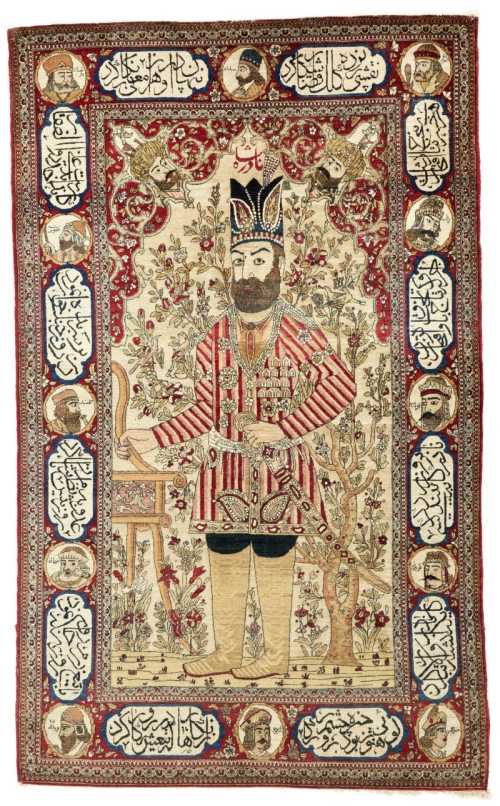
An Isfahan pictorial rug, Central Persia, circa 1910
Estimation
£4,000
5,236 USD
-
£6,000
7,853 USD
Realized Price
£5,670
7,421 USD
13.4%
Sale Date
Sotheby's
-
30 March 2022

A gold medal commemorating the coronation of Muhammad Reza Shah and Queen Farah
Estimation
£100
132 USD
-
£200
263 USD
Realized Price
£160
211 USD
6.667%
Sell at
Sale Date
Rosebery's Auction
-
1 April 2022
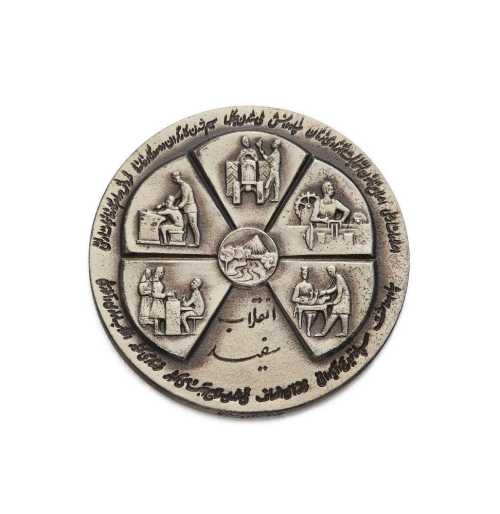
A silver memorial medal of the White Revolution, Muhammad Reza Shah, 1967
Estimation
£200
263 USD
-
£300
395 USD
Realized Price
£170
224 USD
32%
Sell at
Sale Date
Rosebery's Auction
-
1 April 2022
Realized Price
67,245 USD
Min Estimate
35,481 USD
Max Estimate
53,247 USD
Average Artwork Worth
+83.63%
Average Growth of Artwork Worth
Sales Performance Against Estimates
Average & Median Sold Lot Value
2021 - 2025
Performance vs. Estimate
2021 - 2025
Sell-through Rate
2021 - 2025
Similar Artworks
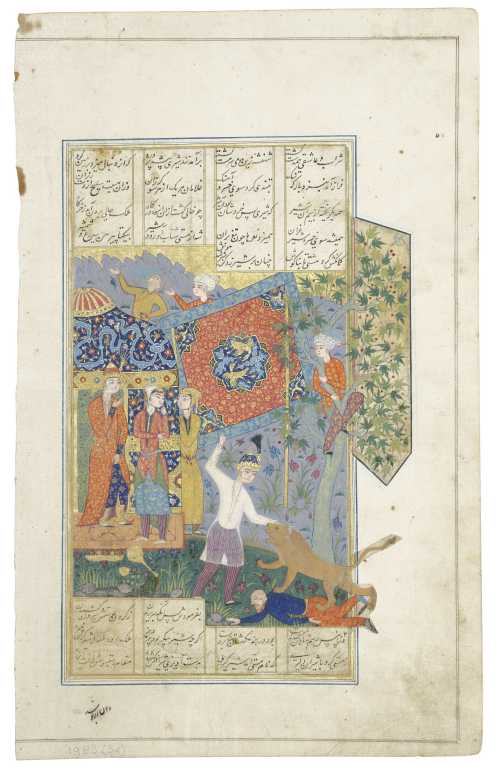
KHUSRAW KILLS THE LION WITH HIS FIST
Estimation
£6,000
7,897 USD
-
£8,000
10,529 USD
Realized Price
£20,160
26,533 USD
188%
Sell at
Sale Date
Christie's
-
31 March 2022
